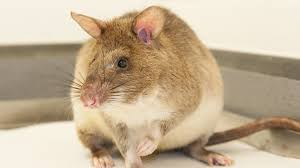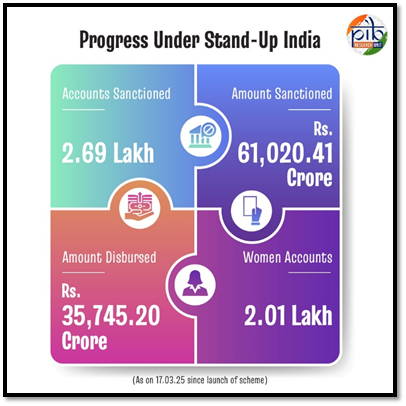Pamban Bridge
Syllabus :GS3/Economy
In News
The new Pamban Bridge will be inaugurated by Prime Minister Narendra Modi, replacing the century-old structure.
Historical Linkages
- The Pamban Bridge connects Rameswaram to mainland India, spanning across the ocean.
- It was originally built in 1914 and served as India’s first sea bridge, crucial for trade and pilgrimage.
- The old bridge survived the 1964 tsunami, which tragically washed away a train, but suffered extensive damage.
- It was later restored by renowned engineer E. Sreedharan with the help of local fishermen.
- The new bridge was designed to overcome the limitations of the old structure, ensuring durability, improved maritime navigation, and future-ready capacity.
- It aims to enhance regional connectivity and support economic growth.
New Bridge
- The New Pamban Bridge was constructed by Rail Vikas Nigam Limited (RVNL), a Navratna PSU under the Ministry of Railways.
- It features a 72.5-meter lift span that can rise 17 meters to allow ships to pass.
- It is 3 meters higher than the old bridge and is designed to accommodate both heavy freight trains and advanced semi-high-speed trains, like Vande Bharat.
- It spans 2.08 kilometers and has an expected lifespan of 58 years.
- It is India’s first Vertical Lift Railway Sea Bridge and is built with advanced materials to withstand harsh marine conditions.

Significance
- The old bridge was a critical link for trade, particularly with Sri Lanka, and survived challenging conditions like the 1964 tsunami.
- The restoration of the old bridge in 1964 by Sreedharan was a significant achievement, completed in just 46 days.
- The new bridge continues the legacy of facilitating trade and pilgrimage while providing a modern solution to operational challenges posed by corrosion and high maintenance of the old bridge.
Source :IE
Ottawa Convention
Syllabus :GS 2/IR
In News
Poland, Finland, and all three Baltic states have announced plans to withdraw from the 1997 Ottawa Convention banning anti-personnel landmines, citing growing security threats from Russia.
- Countries leaving the treaty can resume the production, stockpiling, and use of landmines.
Ottawa Convention
- It is formally known as the Convention on the Prohibition of the Use, Stockpiling, Production, and Transfer of Anti-Personnel Mines and on their Destruction.
- It is an international agreement that bans anti-personnel landmines.
- It was adopted in 1997 during a diplomatic conference in Oslo and opened for signature in Ottawa later that year.
- The treaty came into force on March 1, 1999.
Progress
- It has significantly reduced the production and use of anti-personnel mines, leading to the destruction of over 40 million stockpiled mines.
- It has also facilitated assistance for survivors and communities affected by landmines, as well as the clearing of mine-contaminated areas.
- This has resulted in a substantial decline in casualties.
Importance
- It has been crucial in advancing global mine clearance efforts and framing victim assistance in the broader context of disability, contributing to safer, more productive land use in affected regions.
| Do you know ? – Anti-personnel landmines disproportionately affect civilians, with over 80% of victims being non-combatants. – The UN reported that Ukraine became the most mined country in 2024, with over 1,200 civilian casualties. Some countries, such as Lithuania, are also considering withdrawing from the 2008 Convention on Cluster Munitions, which is another controversial weapon that has been used in Ukraine’s defense. |
Source :IE
150th Assembly of Inter-Parliamentary Union (IPU)
Syllabus :GS 2/Governance/IR
In News
Lok Sabha Speaker, Shri Om Birla is leading a Parliamentary Delegation to the 150th Assembly of Inter-Parliamentary Union (IPU), being held in Tashkent from 5 to 9 April, 2025.
About
- The theme of the assembly will focus on “Parliamentary action for social development and justice,” addressing issues like poverty eradication, decent work promotion, social inclusion, and the participation of marginalized groups in decision-making.
The Inter-Parliamentary Union (IPU)
- It is a global organization of national parliaments, founded in 1889 with 181 Members and 15 Associate Members.
- It promotes peace, democracy, and sustainable development by facilitating parliamentary diplomacy and empowering parliaments to address global issues.
- Its mission is to support democratic governance, human rights, gender equality, youth empowerment, climate action, and sustainable development through political dialogue and cooperation.
- It is funded mainly by its Members and has headquarters in Geneva, Switzerland, with offices in New York and Vienna.
Source :PIB
Vibrant Villages Programme-II (VVP-II)
Syllabus: GS3-Infrastructure/Internal Security
Context
- The Union Cabinet has approved the second phase of the Vibrant Villages Programme (VVP) to boost development in strategic border areas.
About Vibrant Villages Programme-II (VVP-II)
- It is a Central Sector Scheme (100% Centre-funded) with a total outlay of ₹6,839 crore.
- Implementation and Timeline: It will be implemented in select strategic villages across the following States/UTs till FY 2028–29:
- Arunachal Pradesh, Assam, Bihar, Gujarat, Jammu & Kashmir (UT), Ladakh (UT), Manipur, Meghalaya, Mizoram, Nagaland, Punjab, Rajasthan, Sikkim, Tripura, Uttarakhand, Uttar Pradesh and West Bengal.
- Objective: The programme aims to create better living conditions and adequate livelihood opportunities to ensure prosperous and safe borders, control trans-border crime, assimilate the border population with the nation, and inculcate them ‘as eyes and ears of the border guarding forces’— vital for internal security.
- Key Features:
- Infrastructure development within the village or a cluster of villages,
- Support for value chain development (via cooperatives, SHGs, etc.),
- Border-specific outreach activities,
- Education infrastructure like SMART classes,
- Tourism circuit development and
- Works/projects to create diverse & sustainable livelihood opportunities.
- Significance: VVP-II along with VVP-I, is a transformative step towards making border villages self-reliant, resilient, and vibrant—crucial for national security and inclusive development.
Source: PIB
African Giant Pouched Rat
Syllabus: GS3/Species in News
Context
- A giant African pouched rat, set a world record by detecting 109 landmines and 15 other unexploded ordnance (UXOs) in Cambodia.
About
- It made the Guinness World Record for most landmines detected by a rat.
- The rats are trained to sniff out chemicals that are found in landmines and other weapons abandoned on battlefields.
- Because of their small size, the rats are not heavy enough to detonate the mines.
- The rats can check an area the size of a tennis court in about 30 minutes, whereas a metal detector might take four days to clear the same land.
- They can also detect tuberculosis far quicker than it would be found in a lab using conventional microscopy.
- Cambodia remains one of the most heavily mined countries due to decades of war.
- The country aimed to be mine-free by 2025, but the deadline was extended to 2030 due to funding challenges and new minefields discovered.
The African Giant Pouched Rat
- Scientific name: Cricetomys gambianus, it is a large rodent species native to sub-Saharan Africa.
- Appearance: They have greyish-brown fur, with large ears and a distinctive pouch-like cheek where they store food.

- Habitat: These rats are found in a range of habitats, including savannas, forests, and agricultural areas in sub-Saharan Africa.
- Diet: They are omnivores and mainly feed on fruits, seeds, insects, and small animals.
- Intelligence: These rats are highly intelligent and trainable, which makes them ideal candidates for work like landmine detection and medical alert services.
- Conservation Status: It is classified as “Least Concern” by the IUCN Red List.
Source: TH
Agasthyamalai landscape
Syllabus: GS3/Environment and Conservation
Context
- The Supreme Court has directed the Central Empowered Committee (CEC) to survey the entire Agasthyamalai landscape to identify non-forestry activities and encroachments.
About
- The ruling aims to initiate restoration of pristine forest areas and protect tiger habitats and wildlife sanctuaries.
- Survey Scope: The CEC survey will include Periyar tiger reserve, Srivilliputhur sanctuary, Meghamalai sanctuary, and Thirunelveli sanctuary.
- Comparative Data: The survey will compare current forest cover with historical data to assess depletion and degradation.
| Central Empowered Committee (CEC) – The CEC was formed in 2002 (and reconstituted in 2008) by the Supreme Court under the T.N. Godavarman Thirumulpad vs. Union of India judgement. – The Committee functions under the administrative control of the Central Government in the Ministry of Environment. – Composition: A member secretary, and the remaining three expert members, who are civil servants appointed by the Union Ministry of Environment Forest and Climate Change (MoEFCC). |
Agasthyamalai
- Agasthyamalai Biosphere Reserve is located in the southern Western Ghats in South India, spanning the Kerala-Tamil Nadu border.
- UNESCO Recognition: Added to UNESCO’s World Network of Biosphere Reserves in 2016.
- The reserve includes three wildlife sanctuaries, Shendurney, Peppara and Nayar, as well as the Kalakad Mundanthurai Tiger reserve.
- The reserve is home to Kani tribes from both Tamil Nadu and Kerala, which number in total approximately 30,000 inhabitants.
- The Agasthyamala peak rises to 1,868 meters within the Neyyar Wildlife Sanctuary.
- Cultural Significance: It is named after the Hindu sage Agasthya Muni, with his statue situated at the top of the peak; a popular pilgrimage site.
- Flora & Fauna: Home to a diverse range of species, including rare and medicinal plants; about 2,000 medicinal plants used in Ayurvedic treatments.
Source: TH
9 Years of Stand-Up India
Syllabus: GS2/ Governance
Context
- The Stand-Up India Scheme, launched on 5th April 2016, has completed nine years of its implementation.
About
- The Stand-Up India Scheme is an initiative of the Ministry of Finance aimed at promoting entrepreneurship among Scheduled Castes (SC), Scheduled Tribes (ST), and women.
- The scheme facilitates bank loans ranging from ₹10 lakh to ₹1 crore for setting up greenfield enterprises in manufacturing, services, trading, or activities allied to agriculture.
- Eligibility Criteria:
- The borrower must be SC/ST and/or a woman entrepreneur, aged above 18 years.
- In case of non-individual enterprises, at least 51% of the shareholding and controlling stake must be held by either an SC/ST or a woman entrepreneur.

Source: PIB
Technology and Innovation Report 2025
Syllabus: GS3/ Science and Technology
Context
- The 2025 Technology and Innovation Report, entitled: Inclusive artificial intelligence for development, has been issued by United Nations Trade and Development (UNCTAD).
About The Report
- It aims to guide policymakers through the complex AI landscape and support them in designing science, technology and innovation policies that foster inclusive and equitable technological progress.
- The US leads the world in terms of private investment in AI, at 67 billion US dollars in 2023, or 70 percent of global AI private investment.
- China was in second position, with 7.8 billion US dollars, and India in tenth position, with 1.4 billion dollars.
- India has been ranked 10th in the world with significant private investments in Artificial Intelligence (AI) in 2023.
- According to the Report India ranked 36th in 2024 on the Readiness for Frontier Technologies Index, improving its position from 48th in 2022.
Concerns
- The report shows that just 100 companies, mostly in the United States and China, are behind 40 percent of the world’s private investment in research and development, highlighting a sharp concentration of power.
- At the same time, 118 countries – mostly from the Global South – are missing from global AI governance discussions altogether.
- The report estimates that up to 40 percent of global jobs could be affected by AI.
Suggestions
- Governments should prioritise reskilling, upskilling, and workforce adaptation to ensure that AI augments employment opportunities rather than replaces them.
- To avoid being left behind, developing countries need to strengthen the three key leverage points;
- Infrastructure: Ensuring access to affordable internet and computing power.
- Data Ecosystems: Building frameworks for data collection, sharing, and privacy.
- Skills Development: Promoting digital literacy and problem-solving abilities.
- The report proposes establishing a shared global facility to give all countries equitable access to computing power and AI tools.
- It also recommends creating a public disclosure framework for AI, similar to existing environmental, social and governance (ESG) standards, to boost transparency and accountability.
Source: AIR
Hamari Parampara Hamari Virasat initiative
Syllabus: GS2-Polity and Governance
Context
- The Union Ministry of Panchayati Raj, in collaboration with the Government of Jharkhand, organized a national-level event under the initiative ‘Hamari Parampara Hamari Virasat’ in New Delhi.
- The event also marked the 150th Birth Anniversary Year of Bhagwan Birsa Munda (Janjatiya Gaurav Varsh).
About the Hamari Parampara Hamari Virasat
- Launched: On 26th January 2025 by the Department of Panchayati Raj, Government of Jharkhand, with support from the Ministry of Panchayati Raj, the campaign has seen participation from over 3,000 villages pledging to preserve traditional self-governance and cultural practices.
- Objective: To preserve, enhance, and transmit to future generations the cultural heritage, folk songs, festivals, and worship practices integral to the traditional governance systems of various Scheduled Tribe communities in Scheduled Areas.
- The program aims to document the vibrant history and cultural practices of villages across Jharkhand.
- Alignment with PESA Act (1996): This initiative aligns closely with the Panchayats (Extension to the Scheduled Areas) Act, 1996 (PESA Act), which empowers Gram Sabhas in Scheduled Areas to safeguard tribal customs, traditions, and self-governance.
Source: PIB